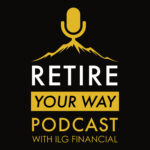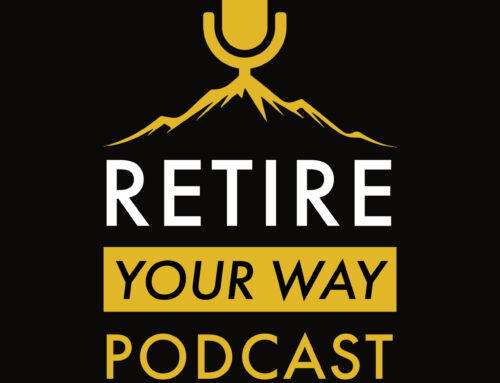Article originally published by Forbes.com
Written by Bobbie Rubin
 “I was 64 on New Year’s Eve 2015, when I worked my last shift at the Chicago Tribune. I packed up my cubicle, turned off the lights and – just like that – dropped the curtain on one of the most rewarding chapters of my life.
“I was 64 on New Year’s Eve 2015, when I worked my last shift at the Chicago Tribune. I packed up my cubicle, turned off the lights and – just like that – dropped the curtain on one of the most rewarding chapters of my life.
At first, I was giddy with all the freedom – reading those books that had piled up on my nightstand, organizing closets, traveling, meeting friends for leisurely lunches (such a pleasure after hundreds of Lean Cuisines at my desk).
But after a few years, the novelty had worn off. I never felt comfortable with the label “retiree” which seemed better suited to someone in a gated community, with sherbet-colored pants and a golf cart.
Besides, I missed work, which had always brought a rhythm to my days. I longed for the buzz of activity, the over-the-cubicle banter with co-workers, a reason to wear make-up. Most importantly, I still had a lot of gas in the tank.
So, I was delighted when I walked into a local flower shop looking for a plant and walked out with a job offer.
The gig was too perfect to pass up: 12 hours a week, a 15-minute stroll from home in an industry that makes people happy. After years of feeling marginalized – of employers actually paying me and my boomer colleagues to get out – it felt good to be wanted again.
Little did I know that I was part of a fledgling “unretirement” trend, thanks to a tight labor market, according to experts. More than half of the 5 million people who dropped out of the labor force since the start of the pandemic are 55 or older. But now, there’s been a small uptick in the other direction, said Nick Bunker, an economic research director for Indeed, a popular employment website He attributed the “pickup” of retired people returning to work to two positive developments.”
Read the remainder of this article by clicking here.























 Megan Jones joined the ILG Financial team in 2020 as marketing director. Megan and her husband live in Fredericksburg, VA with their German Short Haired Pointer, Gus. Megan is a graduate of Longwood University and holds a degree in communications. Megan is the oldest of Dave Lopez’s three children and not only enjoys working alongside her father, but also with her cousin, Chase, who joined the ILG Financial team in 2020 as an advisor. Megan is also a fully licensed Life, Health, and Annuity agent. When not at work, Megan enjoys sitting on the back porch with family and friends enjoying food and music.
Megan Jones joined the ILG Financial team in 2020 as marketing director. Megan and her husband live in Fredericksburg, VA with their German Short Haired Pointer, Gus. Megan is a graduate of Longwood University and holds a degree in communications. Megan is the oldest of Dave Lopez’s three children and not only enjoys working alongside her father, but also with her cousin, Chase, who joined the ILG Financial team in 2020 as an advisor. Megan is also a fully licensed Life, Health, and Annuity agent. When not at work, Megan enjoys sitting on the back porch with family and friends enjoying food and music. Chase Lopez joined the ILG Financial team in 2020 as an advisor. Chase is a 2016 James Madison University graduate with a degree in management. Chase has been trained under the tutelage of Dave Lopez, who is not only the founder and managing member of ILG Financial, but also is Chase’s uncle and godfather. He also enjoys working alongside his cousin, Megan, who is Dave’s daughter.
Chase Lopez joined the ILG Financial team in 2020 as an advisor. Chase is a 2016 James Madison University graduate with a degree in management. Chase has been trained under the tutelage of Dave Lopez, who is not only the founder and managing member of ILG Financial, but also is Chase’s uncle and godfather. He also enjoys working alongside his cousin, Megan, who is Dave’s daughter. Amy Anderson joined the ILG Financial team in 2023 as the client relations coordinator. Her responsibilities include scheduling of appointments, annual check-up notifications, and annuity and required minimum distribution assistance. She is a graduate of Harding University with a degree in Computer Information Systems. Amy and her husband have two children and she enjoys reading, crocheting, music and spending time with her family.
Amy Anderson joined the ILG Financial team in 2023 as the client relations coordinator. Her responsibilities include scheduling of appointments, annual check-up notifications, and annuity and required minimum distribution assistance. She is a graduate of Harding University with a degree in Computer Information Systems. Amy and her husband have two children and she enjoys reading, crocheting, music and spending time with her family. Jessica Carson joined the ILG Financial team in 2018 as an agent. Jessica and her husband have four children, two dogs, 3 barn cats, 5 chickens, and three parakeets. She indeed loves her children and pets! When not at work, Jessica enjoys playing the piano and cello as well as traveling and spending time outside with her family, hiking, fishing, and boating.
Jessica Carson joined the ILG Financial team in 2018 as an agent. Jessica and her husband have four children, two dogs, 3 barn cats, 5 chickens, and three parakeets. She indeed loves her children and pets! When not at work, Jessica enjoys playing the piano and cello as well as traveling and spending time outside with her family, hiking, fishing, and boating. Terri Center joined the ILG Financial team in 2019 as client services manager. She handles client records, application processing, and gathering information to provide a professional and friendly experience with all of our clients. Terri is a graduate of Oakland University. She is married and has two children. She enjoys hiking, family time, and puzzle challenging video games. She also likes to share her creativity in her canvas paintings and sewing projects.
Terri Center joined the ILG Financial team in 2019 as client services manager. She handles client records, application processing, and gathering information to provide a professional and friendly experience with all of our clients. Terri is a graduate of Oakland University. She is married and has two children. She enjoys hiking, family time, and puzzle challenging video games. She also likes to share her creativity in her canvas paintings and sewing projects.